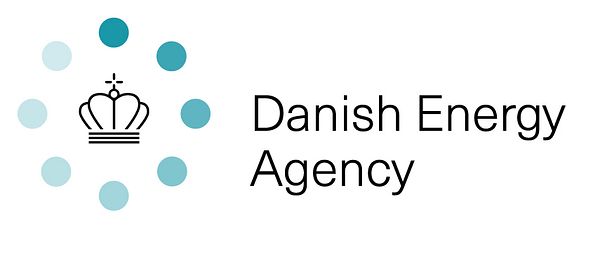Press release -
Significant increase in the consumption of renewable energy in 2017
Consumption of renewable energy increased by almost 11%, while coal consumption fell by 21% in 2017. Overall, this led to a large drop in energy-related CO2 emissions. This appears by the Danish Energy Agency’s preliminary energy statistics for 2017, which also show that Denmark's degree of self-sufficiency increased last year.
27 March 2018
Observed Danish energy consumption increased marginally by 0.1% in 2017 to 744 PJ, while adjusted gross energy consumption increased by 0.2%. However, this change reflects a shift in the composition of fuels such that consumption of coal and natural gas has been replaced by an increase in the consumption of renewable energy and in oil consumption.
In the adjusted gross energy consumption, which is the energy consumption adjusted for fuel consumption linked to foreign trade in electricity and fluctuations in climate, the consumption of coal and natural gas fell by 21% and 5.1%, respectively. Conversely, consumption of renewable energy and oil consumption increased by 10.9% and 2.9%, respectively. This change is mainly because a decrease in wind levels in 2016 meant a lower production of wind energy, which, among other things, led to increased coal consumption at power plants. In contrast, 2017 has been close to a normal wind year.
Decrease in emissions of CO2
The decreasing consumption of fossil fuels in 2017 meant that observed emissions of CO2 from energy consumption fell by 5.4% compared with 2016. Adjusted for fuel consumption linked to foreign trade in electricity and fluctuations in climate, CO2 emissions fell by 5.3% in 2017.
On the basis of the preliminary energy statistics, total observed Danish emissions of greenhouse gases are estimated to have decreased by 3.9% in 2017, and emissions adjusted for climate and fuel consumption linked to foreign trade in electricity are estimated to have fallen by 4.0%.
A final statement of Danish emissions of greenhouse gases will be published later by DCE, the Danish Centre for Environment and Energy.
Increase in the use of renewable energy
Renewable energy’s share of energy consumption rose in 2017. The share of renewable energy in adjusted gross energy consumption increased from having covered 29.1% in 2016 to covering 32.3% in 2017. This includes an increase in the consumption of wind power and in the use of biogas.
The EU calculates the share of renewable energy in relation to final energy consumption. It will not be possible to calculate this share until the final energy statistics have been published by the Danish Energy Agency in the autumn. In recent years, the renewable energy share according to the EU calculation method has been around 1-2 percentage points higher than in the national statement based on adjusted gross energy consumption.
Slight increase in degree of self-sufficiency
The degree of self-sufficiency in energy rose in 2017 from 83% to 85%. This means that total Danish production of energy from oil, natural gas and renewables corresponded to 85% of Denmark's adjusted gross energy consumption in 2017.
Degree of self-sufficiency is a measure of the ratio between primary energy production and consumption of oil, natural gas, coal, renewables and waste in Denmark. Looking at the ratio between consumption and production of oil and gas, Denmark continues to be a net exporter; with a degree of self-sufficiency of 114% in 2017. The unchanged level in relation to 2016 is due to increased natural gas production, which compensates for the reduced production of crude oil.
Total primary energy production in Denmark rose by 2.7% to 655 PJ in 2017. Production of crude oil fell by 2.7%, while production of natural gas and renewable energy grew by 7.1% and 8.4%, respectively, in 2017 relative to 2016. The large increase in renewable energy is primarily attributable to an increase in production of wind power and production of biogas for energy.
Decrease in energy intensity
Energy intensity measured in relation to adjusted gross energy consumption fell by 1.8% in 2017 compared with 2016. A drop in intensity means that gross domestic product has risen by more than energy consumption.
Over the period from 2000 to 2016, energy intensity fell by 22.6%. It is currently not possible to calculate energy intensity for individual sectors. These figures will be included in the final energy statistics to be published by the Danish Energy Agency in the autumn.
Read more: Link to energy statistics is available (in Danish) at the website of the Danish Energy Agency: www.ens.dk/Talogkort
Further information: Ture Falbe-Hansen, Head of Media Relations, tel.: +45 25 13 78 46, email tfh@ens.dk or Mikkel Sørensen, Head of Division, tel.: +45 33 92 67 26, email: mis@ens.dk.
Related links
Topics
- Business enterprise, General
Categories
- climate and co2
- energy statistics
- renewable energy
The work of the Danish Energy Agency involves matters relating to energy supply and consumption, as well as Danish efforts to reduce carbon emissions. The Agency is also responsible for Danish building policy and promotes more sustainable building with regard to energy consumption, use of materials and economic issues.
The Agency is responsible for the entire chain of tasks linked to energy production and supply, transportation and consumption, including energy efficiency and savings as well as Danish national CO2 targets and initiatives to limit emissions of greenhouse gasses. The Agency supports building-policy initiatives to increase the productivity and quality of building as well as the operation and maintenance of buildings, with focus on sustainable building. The Agency also collaborates with the building sector to establish a good framework for the industry.
The Danish Energy Agency was established in 1976, and is an agency under the Ministry of Climate, Energy and Building. The Agency employs about 360 persons.
